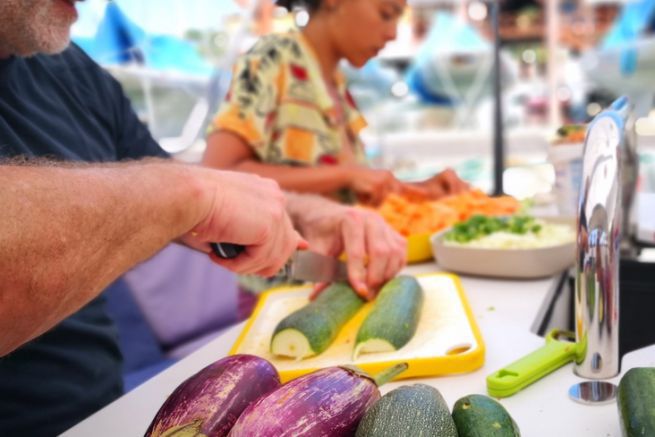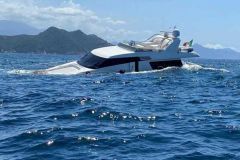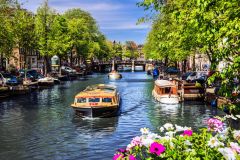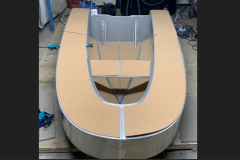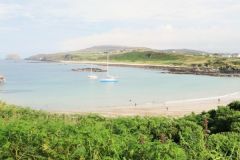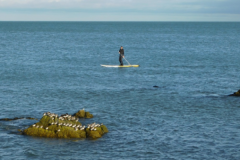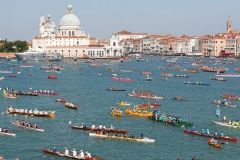As sailors, we've all heard about the plastic continents that accumulate in the oceans. But they are only the tip of the iceberg, most of the rubbish collects at the bottom of the ocean and on the foreshores.
Yet plastic has acquired an indispensable place in our lives as sailors, it is a durable, lightweight and strong material. Plastic is used to make boats, bras, ropes, sails, saddlery and crockery..
However, today it is obvious that we need to reduce our consumption of plastics. So, in our daily lives as sailors, we can take action by limiting our disposable plastics to a minimum. Moreover, a material with such beautiful qualities of durability should never be used as a consumable.
Studies show that most of the plastic waste we produce on a daily basis comes from the way we consume food and drink. As we do at least 3 times a day, limiting food plastics is an excellent starting point to combat our creation of plastic waste.
?Voici a few tips to limit the production of plastic waste on board our boats.

Carefully plan for bunkering
Planned bunkering helps to limit food waste, hollow bellies and helps to optimize the space of our small lazarettes. It also helps to reduce over-consumption of food-grade plastic.
For a successful cruise, bunkering must take into account the number of crew members, their respective appetites and the navigation programme: a Mediterranean crossing is not prepared like a week of coastal navigation.
Tip: we know the influence of marketing and our near inability to walk out of the store with only the products that get us in. So the best thing to do is to anticipate and plan meals. And above all, avoid going to the store on an empty stomach, it seems that the score is affected.
Prefer retail sales
We would all like to stock up at small local stores and buy only fresh produce in bulk, but sometimes that is just not possible. So even if we have to stock up at a supermarket, we might as well be prepared to limit the production of future plastic waste and to approach zero waste.
Regardless of the country, the majority of supermarkets are organized on the same model. In the middle of the store and at the top of the gondolas are the most processed and packaged items.
Retail spaces are always on the sides (the edges of the frame for the regatta sailors), here you can find fresh products, bread and pastries, butcher's shop, fish shop... Fresh food is healthier, but most of all it is usually not packed.
Tip: Buying food that can be used in multiple recipes also reduces packaging and waste
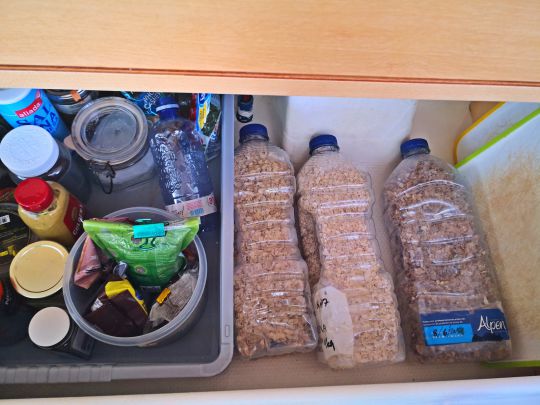
Bring your containers and not just for the case
The reusable shopping bag has become common, but what about all the little "pouches" at plastique?? This particularly light material is almost never recycled. There are alternatives made of fabric, silicone and even reusable plastic.
In fact, we already have a lot of reusable containers on board. The Tupperware-type airtight boxes are even more durable than the best ziplock bags. Invest in good quality reusable products that will last for years.
Tip: In order to go further when bunkering, for certain products such as meat or fish that can drip and get dirty, you can also bring an airtight container to the store to place the paper wrapping. There is no longer any shame in avoiding small disposable pouches by asking the shopkeeper: "Paper wrapping please".
Shopping and storage without consumable plastic
On board, it is not easy to separate waste, so it is before arriving at the lazarette that overpackaging must be limited. In port, it's time to throw everything you can into the right recycling bins.
On board, it's a good idea to have containers to replace the plastic bagged food such as paws, rice, flour..
Despite this, once at sea, we will probably be faced with plastic packaging. Let's not mix them up with the stuff that comes in. It will be easy to make a clean plastic bin that we can store in a trunk. In fact, we quickly realize how much bigger our plastic bins are than their organic equivalent.
Tip: Durable and strong containers are used, and this is how large plastic bottles can find a second use.
Refuelling with as little disposable plastic as possible requires thought and organisation, but it is a small gesture that we sailors can make to preserve our oceans
If you have tips on how to limit plastic consumption on board, share your ideas in the comments.
